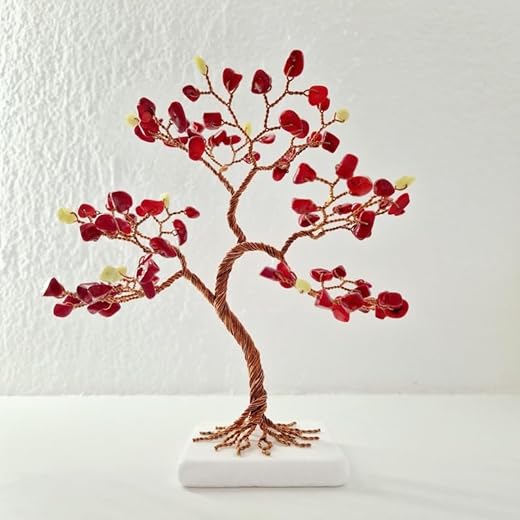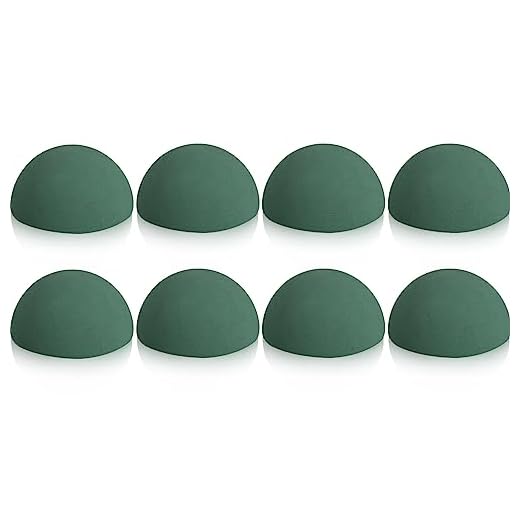




Are you a lover of art and nature? Have you ever wanted to bring the beauty of a bonsai tree into your home, but lack the proper green thumb? If so, then a mini wire bonsai tree may be just the project for you!
Wire bonsai trees offer a unique and creative way to display the beauty and elegance of nature, and they require minimal maintenance. These intricate works of art are made using wire and can be shaped into various tree-like forms. The best part is that you can create your own wire bonsai tree using a few simple materials and tools.
First, you will need to gather the necessary supplies, including wire (preferably aluminum or copper), pliers, wire cutters, and a sturdy base. You can find these materials at your local craft store or online. Once you have gathered your supplies, it’s time to get creative!
To start, cut a long piece of wire and twist it into a basic tree shape, making sure to leave extra length at the bottom to attach it to the base. Then, use the pliers to create branches and shape the tree to your liking. You can bend and twist the wire to create different textures and contours, making your wire bonsai tree truly unique.
Once you have shaped your tree, it’s time to attach it to the base. Use the extra length of wire at the bottom of the tree to secure it to the base, ensuring that it is stable and won’t topple over. You can also add decorative elements, such as moss or rocks, to enhance the natural aesthetic of your wire bonsai tree.
Voila! You have now created your very own mini wire bonsai tree. Place it on a shelf, desk, or tabletop to admire its beauty and enjoy the calming presence of nature in your home. With a little imagination and patience, you can create a stunning piece of art that will be the envy of all who see it.
What is a wire bonsai tree and how to make one
A wire bonsai tree is a miniature replica of a traditional tree made using wire. It is a form of art that originated in Japan and has become popular among bonsai enthusiasts worldwide. Wire bonsai trees are usually made from copper or aluminum wire, which is twisted and shaped to resemble a real tree.
To make a wire bonsai tree, you will need:
Materials:
- Wire (copper or aluminum)
- Wire cutters
- Pliers
- A small container or pot
- Bonsai soil
- Moss or small rocks for decoration
Step by step guide:
- Choose a type of wire that suits your desired tree design. Copper wire is softer and easier to work with, while aluminum wire is more durable.
- Measure and cut the wire into different lengths, depending on the branches and trunk of the tree you want to create.
- Using pliers, bend and twist the wire to mimic the shape and movement of real tree branches and trunk.
- Once you have shaped the wire, secure it to the small container or pot by wrapping the ends tightly around the edges. Make sure the wire is firmly attached.
- Fill the container with bonsai soil, leaving enough space for the roots of the wire bonsai tree.
- Place the wire bonsai tree in the container and carefully arrange the roots in the soil.
- Add more bonsai soil as needed, making sure to cover the roots completely.
- Water the tree gently, moistening the soil but avoiding overwatering.
- Decorate the soil surface with moss or small rocks to enhance the aesthetic appeal of the wire bonsai tree.
Creating a wire bonsai tree requires patience and attention to detail. It is a rewarding process that allows you to showcase your creativity and appreciation for nature in a unique way. With practice, you can master the art of shaping wire to create stunning wire bonsai trees that will captivate and inspire others.
Choosing the right wire for your mini bonsai tree
When it comes to creating a mini wire bonsai tree, choosing the right wire is crucial. The wire not only provides support to the branches and trunk, but it also helps in shaping the tree and adding visual appeal to the overall design. Here are some factors to consider when selecting the wire for your mini bonsai:
1. Gauge: The gauge of the wire refers to its thickness. It is important to choose a wire gauge that is appropriate for the size and weight of your mini bonsai tree. Thicker wire is suitable for larger and heavier trees, while thinner wire is more suitable for delicate and smaller trees.
2. Material: Bonsai wire is available in various materials, including aluminum and copper. Aluminum wire is lightweight, easy to bend, and is suitable for most bonsai trees. Copper wire, on the other hand, is stronger and holds its shape better, but it can also be more difficult to work with.
3. Length: Consider the length of wire you will need based on the size of your tree. It is always better to have more wire than you need, as you can cut off the excess later.
4. Flexibility: The wire should be flexible enough to bend and shape your mini bonsai tree without breaking. Avoid using stiff or brittle wire, as it may damage or deform the tree.
5. Colour: While not necessary for the tree’s health, colored wire can add an aesthetic touch to your mini bonsai. You can choose a wire color that complements the tree’s leaves or trunk, or opt for a neutral color that blends in with the overall design.
By considering these factors, you can choose the right wire for your mini bonsai tree and create a beautiful and well-shaped masterpiece. Remember to handle the wire with care and make adjustments as needed to achieve the desired shape and growth of your bonsai.
Creating the base structure of your wire bonsai tree
Before you can begin shaping your wire bonsai tree, you need to create a solid base structure. This will serve as the foundation for your tree and provide stability for shaping.
Here’s how you can create the base structure for your wire bonsai tree:
- Start by selecting a sturdy wire that is suitable for creating the trunk and branches of your tree. Copper or aluminum wire are commonly used for bonsai trees due to their flexibility and strength.
- Bend the wire at the bottom to form the roots of your tree. You can create multiple bends to give the roots a more natural appearance.
- Twist the wire to create the trunk of the tree. Start at the bottom and work your way up, twisting the wire as you go to give it a textured and organic look.
- Once you have created the trunk, use additional pieces of wire to create the branches. Attach the wire to the trunk and twist it to form the desired shape.
- Continue adding branches until you have achieved the desired overall shape for your wire bonsai tree. Make sure to create a balance between thick and thin branches to emulate the natural growth of a real tree.
Remember to take your time and be patient while creating the base structure. It may take a few tries to get the shape and balance just right. Once you are satisfied with the base structure, you can move on to shaping the foliage of your wire bonsai tree.
Shaping the branches and leaves of your wire bonsai tree
Once you have finished creating the trunk of your wire bonsai tree, it’s time to shape the branches and leaves. This step is crucial in giving your tree a realistic and natural appearance. Here are some tips to help you achieve the desired shape:
1. Bending the branches
Start by gently bending the wire branches in various directions. Use your fingers or small pliers to make subtle bends and twists. This will add depth and dimension to your tree, mimicking the natural growth of a real bonsai.
2. Creating foliage pads
To make your wire bonsai tree look even more authentic, create foliage pads on the branches. Gather small pieces of floral foam and wrap them in green tissue paper or artificial moss. Attach these pads to the wire branches using wire or floral tape. Position them strategically to imitate natural clusters of leaves.
Remember to vary the size and density of the foliage pads to make your tree look more natural and realistic.
Pro tip: Step back frequently and observe your tree from different angles to ensure a balanced and harmonious shape.
By shaping the branches and creating foliage pads, you can transform a simple wire structure into a stunning miniature bonsai tree. Take your time and experiment with different shapes and arrangements to achieve the desired effect. With practice, you’ll be able to create unique and beautiful wire bonsai trees that will impress everyone who sees them.
Adding the final touches to your mini wire bonsai tree
Once you have completed the main structure of your mini wire bonsai tree, it is time to add the final touches to bring your creation to life. These finishing touches will add realism and character to your wire bonsai tree.
1. Adding foliage: To mimic the leaves of a real bonsai tree, you can use small pieces of green tissue paper or fabric. Cut the paper or fabric into tiny leaf shapes and attach them to the branches of your wire tree using craft glue. Arrange the leaves in a natural and organic pattern, making sure to vary the size and orientation of the leaves.
2. Sculpting the trunk: Use pliers or your fingers to carefully bend and shape the wire trunk of your bonsai tree. Create bends and curves that mimic the growth patterns found in real trees. Pay attention to the overall structure and balance of your tree, adjusting the shape as needed.
3. Adding details: Look closely at real bonsai trees for inspiration and add small details to make your wire tree more realistic. For example, you can use thin wire to add tiny branches, or use a toothpick to create knots or rough textures on the trunk. Pay attention to the overall composition of your tree and make adjustments to achieve a pleasing and natural look.
4. Finishing touches: Once you are satisfied with the overall appearance of your mini wire bonsai tree, give it a final touch-up. Trim any excess foliage or wire, and make sure all the elements are securely attached. Take a step back and evaluate your creation, making any final adjustments as needed.
Remember, the beauty of a wire bonsai tree lies in its delicate and intricate details. Take your time and enjoy the process of bringing your mini wire bonsai tree to life!








